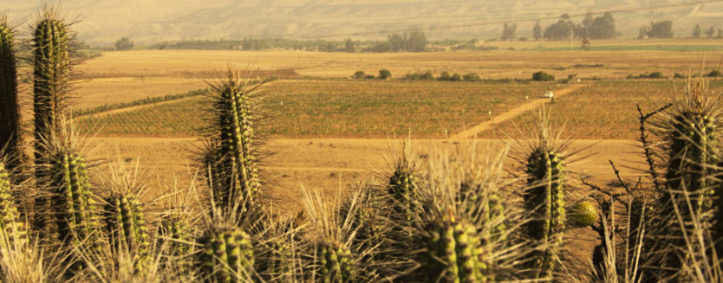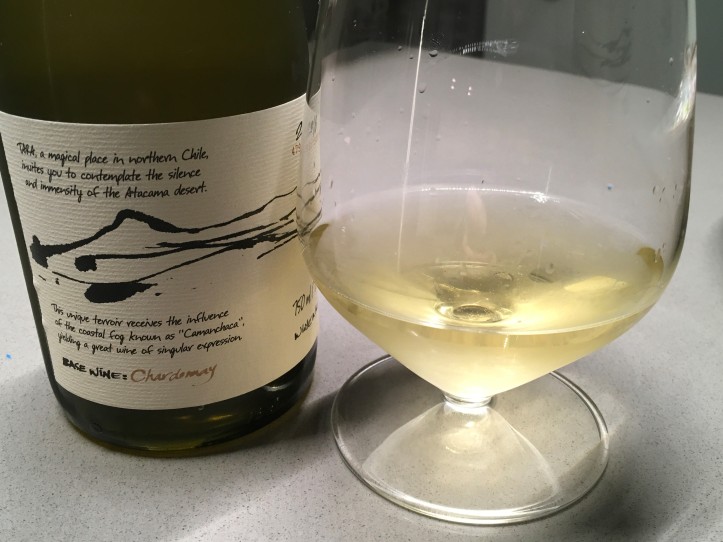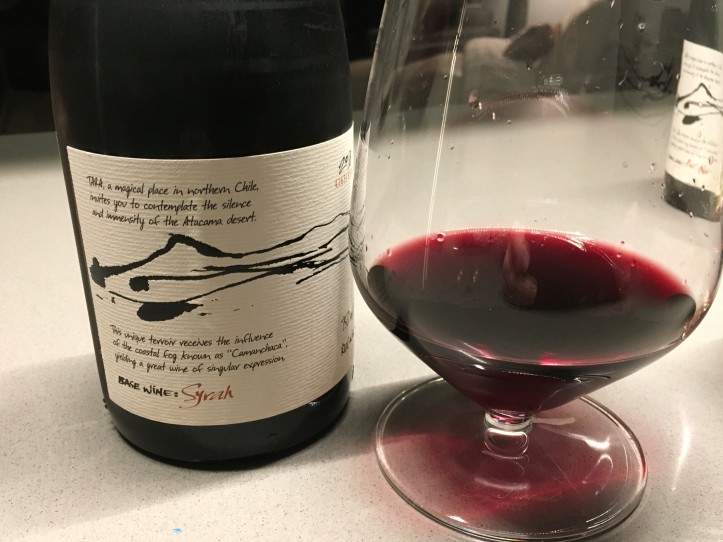
At first sip, these wines give no hint of their unlikely – perhaps impossible – origins. Imagine a few hectares of vineyards scattered across a barren, desert landscape: a place that receives less than 20 millimeters of rain per year; where even the water used for irrigation is so salty that it poses an existential dilemma for winemakers. If they don’t supplement the water supply, ensuring sufficient resources for photosynthesis and growth, the vines will surely die. But if they water those vines without fanatically monitoring salt buildup around the roots, the same thing will happen.
Why would anyone choose to plant vines in such an inhospitable place?
Chile’s Atacama Desert

Located north of Santiago, the Atacama Desert boasts Chile’s northern-most vineyards. This close to the equator, many farmers have opted to grow heat-loving Muscat grapes and distill them into pisco, Chile’s traditional libation. Growing grapes for high-quality dry wines seems like a thankless task. But, thanks to cool winds blowing in from the Pacific Ocean (just 20 kms to the west), the grapes ripen in a (surprisingly) cool Mediterranean climate.

And, while irrigation is necessary to grow anything here (the Atacama is one of the world’s driest places) some relief is provided by the Camanchaca fog, which creeps in from the coast each morning. When annual precipitation is measured in millimeters, every drop counts.

As mentioned above, the soil has a high saline content which presents unique viticultural challenges. Nature, however, often buries a blessing inside of the obstacles she puts in our path. In this case, it is an unmistakable mineral quality to the wines from the Atacama Desert. Some say there is even a noticeable saline flavor permeating the palate. I wouldn’t go that far, but the wines I tasted all had ample acidity and an undeniable freshness that were very attractive.
Winemaking at Tara Atacama
The trio of winemakers – Felipe Tosso, Sergio Hormazábal, and Alejandro Galaz – make the best of their small lots, producing small quantities (4,000-5,000 bottles) of three different wines. They adhere to low-intervention methods both in the vineyards and in the winery:
- Grapes are hand-harvested
- Chardonnay grapes are pressed by foot, with 50% left as whole clusters
- Only native yeasts are used
- No malolactic fermentation
- No filtration
- Minimal addition of sulfur dioxide
- Stainless steel aging for the Chardonnay
- 24 months in fifth-use, 228 litre French barrels for the red wines
Tara Atacama is part of the Viña Ventisquero family of wines, which owns all of the water rights in the Atacama Denominación de Origen. So it looks as if they will be left to tend their vines in peace.


Tasting Notes
Note: I received these wine as media samples. Thoughts are all mine!
2016 Tara White Wine 1: Base Wine Chardonnay (12.5% abv; $40 SRP)

Color: Medium lemon fading to pale at the rim.
Nose: Medium intensity aromas of ripe yellow apple, grilled pineapple, and white peach; lemon peel and wet stones.
Palate: Medium+ intensity flavors of ripe stone fruit, apples, citrus, and chalk. Medium+ acidity, medium body, and medium finish.
Verdict: The perfect balance between lush, ripe fruit and fresh, tart flavors, this wine would be enjoyable on its own or with light fare. I’m thinking about pairing it with fresh fish tacos with a side of homemade guacamole.
2016 Tara Red Wine 1: Base Wine Pinot Noir (13.5% abv; $40 SRP)

Color: Pale ruby with paler pink at the rim.
Nose: Shy notes of strawberry and cherry fruit, with a hint of something herbal/savory that emerges with time in the glass.
Palate: A burst of berry flavor – strawberry, blueberry, blackberry – with sweet black cherry notes, plus some bitter chocolate on the medium finish. Tannins are smooth and well integrated, and acidity keeps the ripe fruit flavors honest.
Verdict: A very nice wine as an apéritif, especially with a charcuterie plate as company. It’s not super-complex but the combo of berry-cherry flavors and crisp acidity make it quite easy to drink.
2016 Tara Red Wine 2: Base Wine Syrah (13% abv; $40 SRP)

Color: Deep ruby, from the core to the rim.
Nose: Complex interplay of blackberry, plum, fresh-turned earth, and white flowers. Very inviting!
Palate: There’s some structure here – medium+ tannins, medium alcohol, and medium+ acidity. Flavors of black fruit (cherry, berry, plum) mingle with dried herbs, forest floor, and a distinct mineral quality which some would call “crunchy.” All the structural components coexist in harmony, resulting in an absolutely beautiful wine.
Verdict: I’m a bit of a Goldilocks when it comes to Syrah: I love the brambly blackberry fruit but not so much that the wine tastes jammy. Bring on the tannins – the more, the better! – but they’d better be in balance with the rest of the structural elements. And dirt – yes! Earthiness is a critical part of the equation. This wine held its own when compared with a fantastic Crozes-Hermitage from Alain Graillot that knocked my socks off. At $40 retail, I’d fill my cart with this wine (and I’d fight you to get the last bottle!)
Have you tried any of the wines from the Atacama DO? What did you think of them?
These sound fantastic!
LikeLiked by 1 person
Really nice wines – especially the Syrah!
LikeLike
It’s enlightening to learn about areas I know little of. When I hear Atacama I think hot dessert and while much of it may be, it’s that cooler breezy area one wouldn’t expect. M+ acidity on the Chardonnay, wow. I look forward to trying the wines, sounds like a team pushing the envelope!
LikeLiked by 1 person
The more I read up on these wines, the more I wanted to know (and taste!) Conditions are harsh but somehow they work. Good thing Vinas Ventisquero (behind the Tara Atacama label) own all water rights here. Still not sure the $40 price tag will fly for the average American consumer but that’s not who they’re marketing to: the plan targets high-end restaurants around the world, with knowledgeable somms and high-involvement consumers. We shall see . . .
LikeLiked by 1 person
Since wines from Chile are such a great value, I bet these with their $40 SRP are worth a lot more! Thanks for the introduction to the region; I loved learning about the water!
LikeLiked by 1 person
Thanks Gwendolyn. They were very good wines; the Syrah was superb!
LikeLiked by 1 person